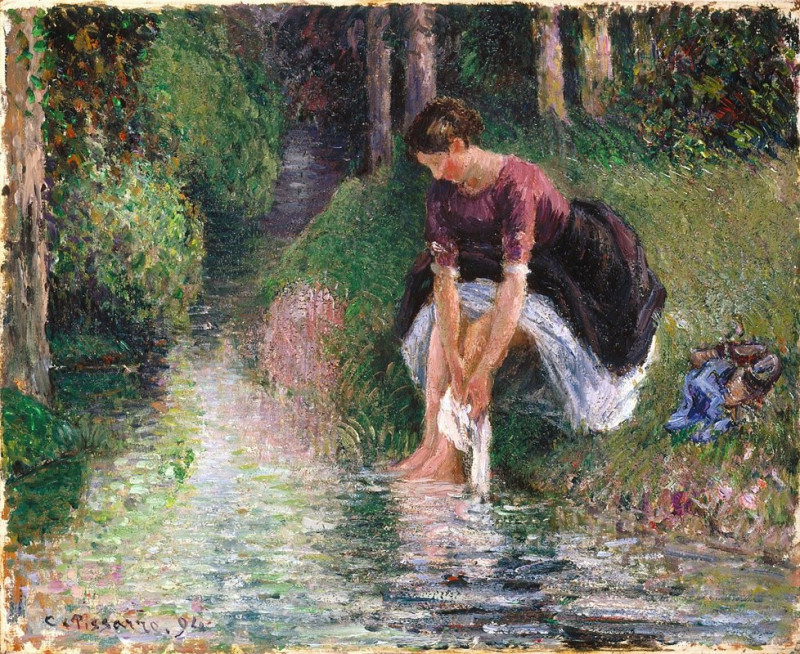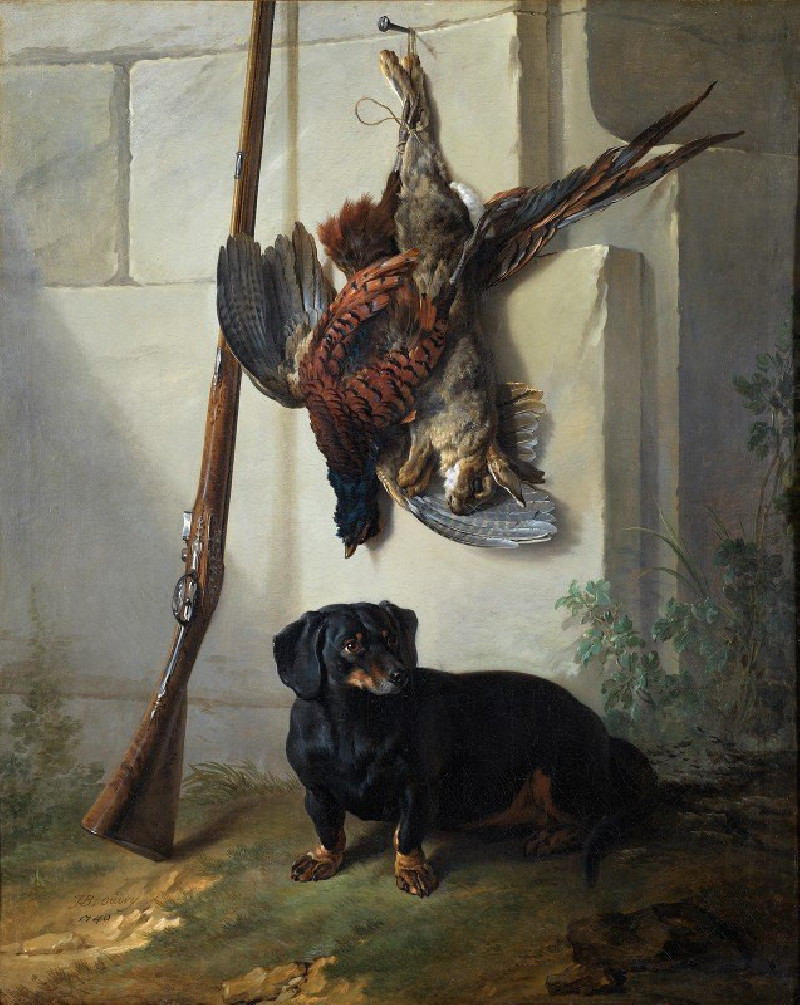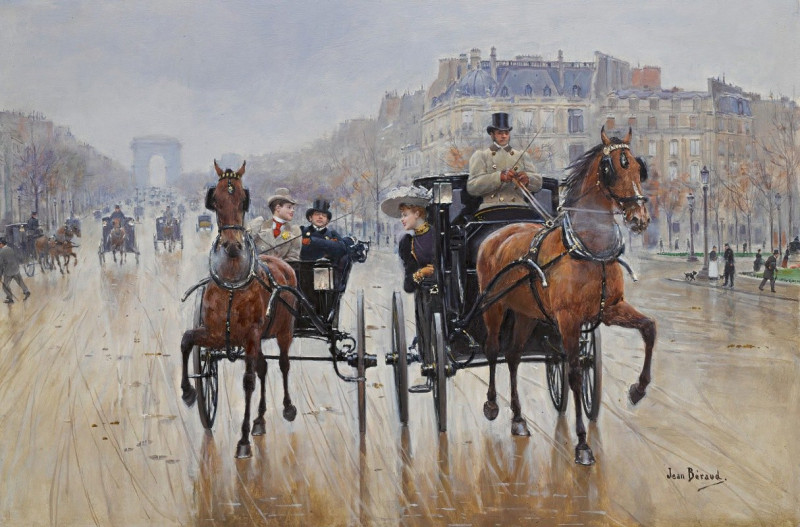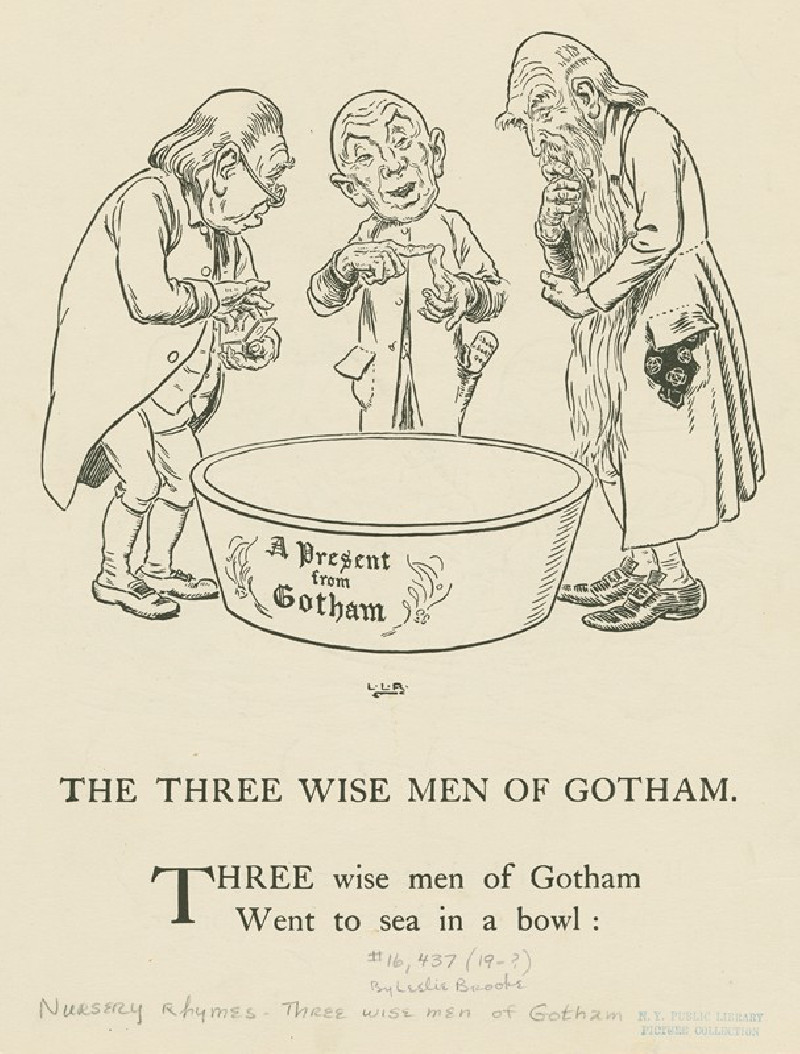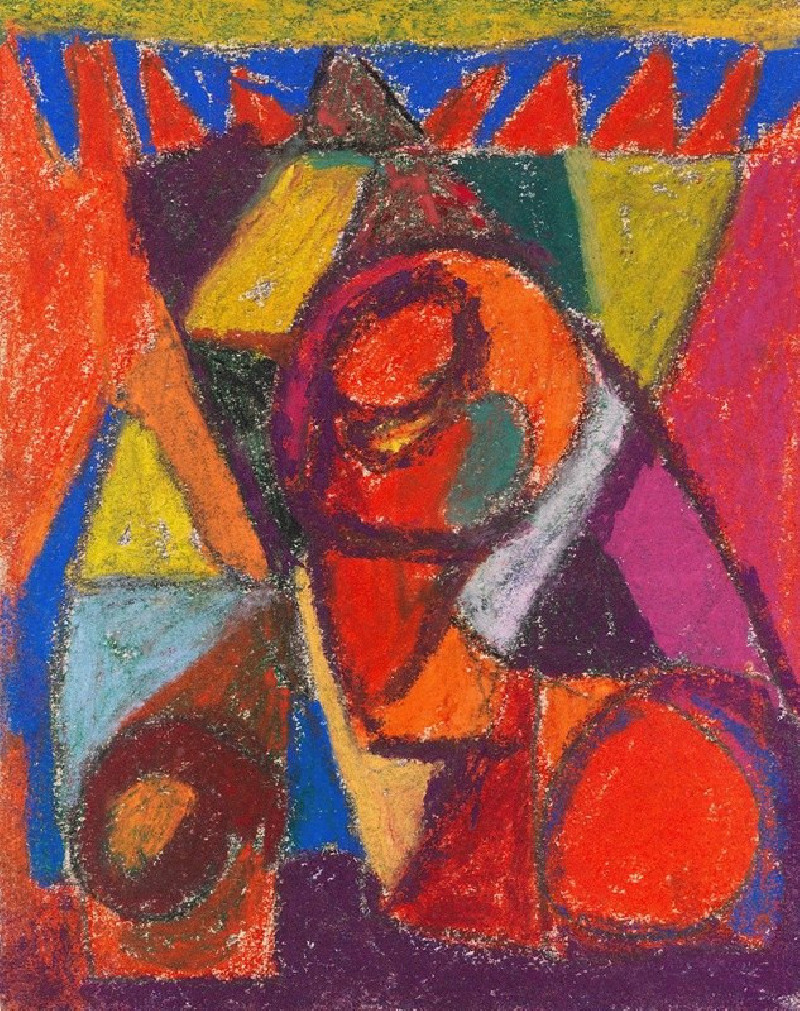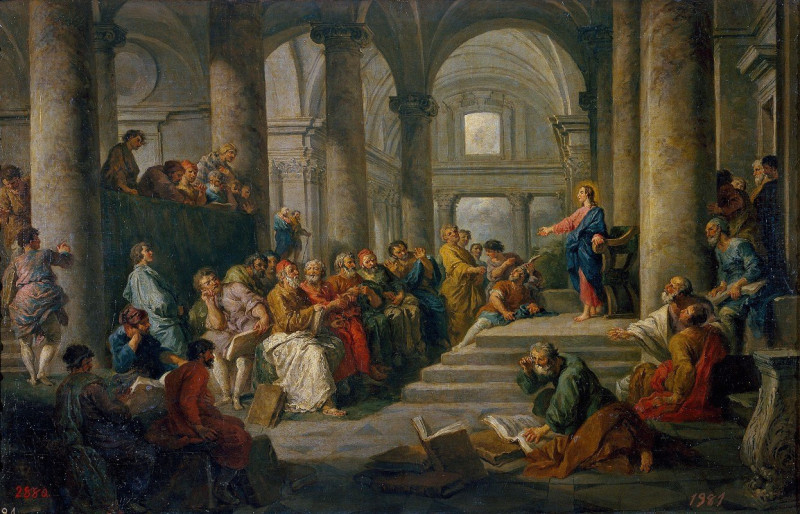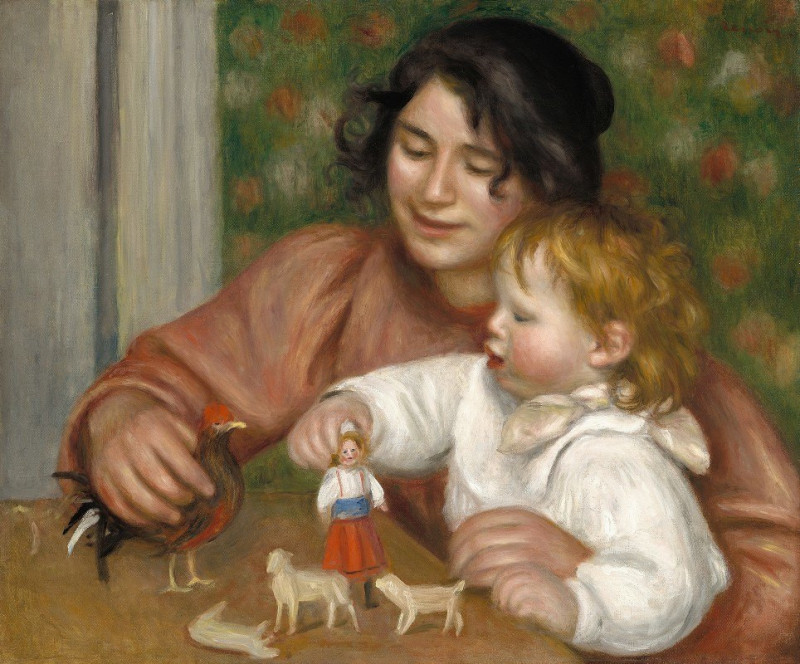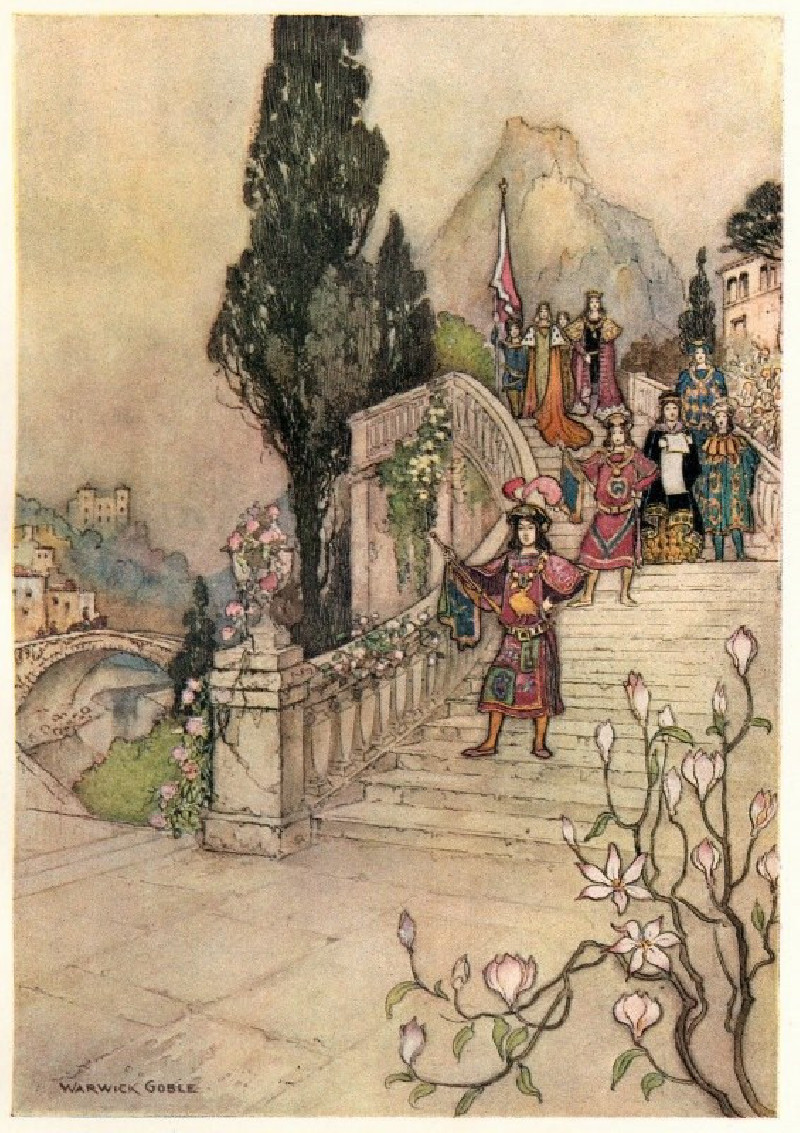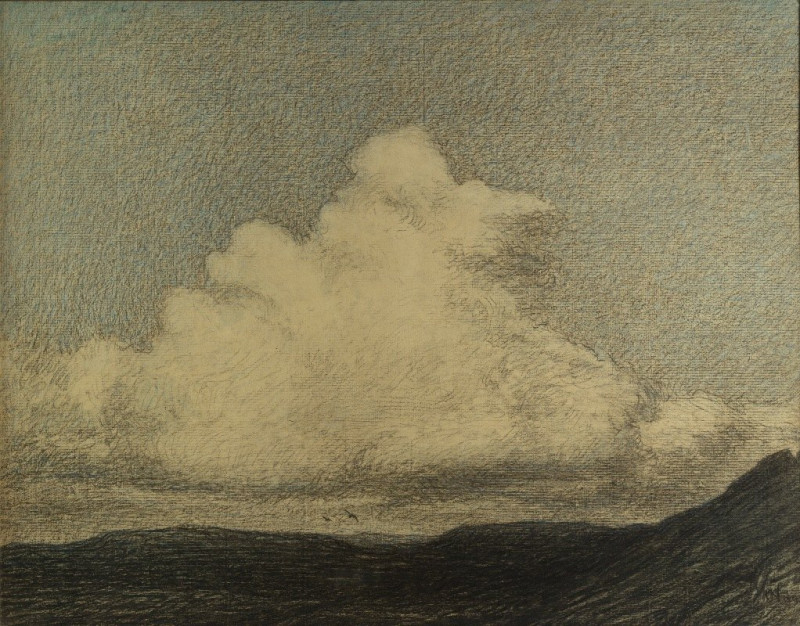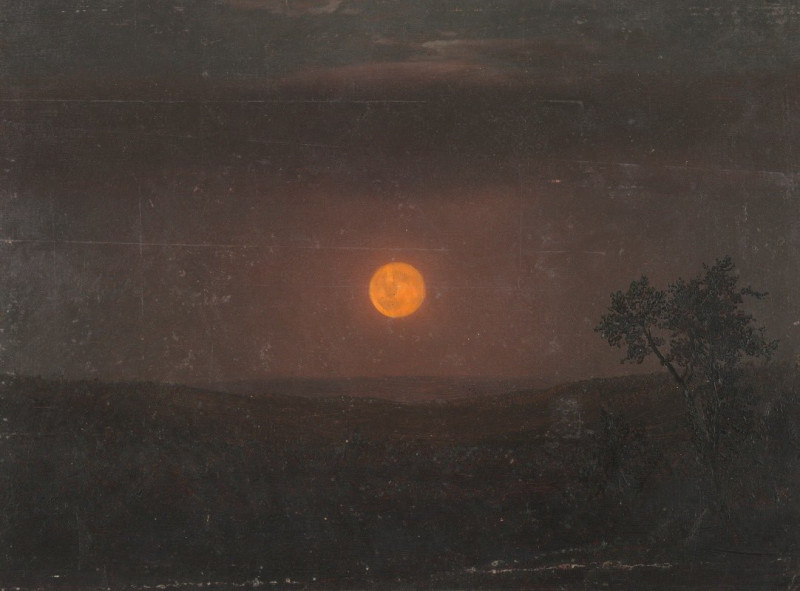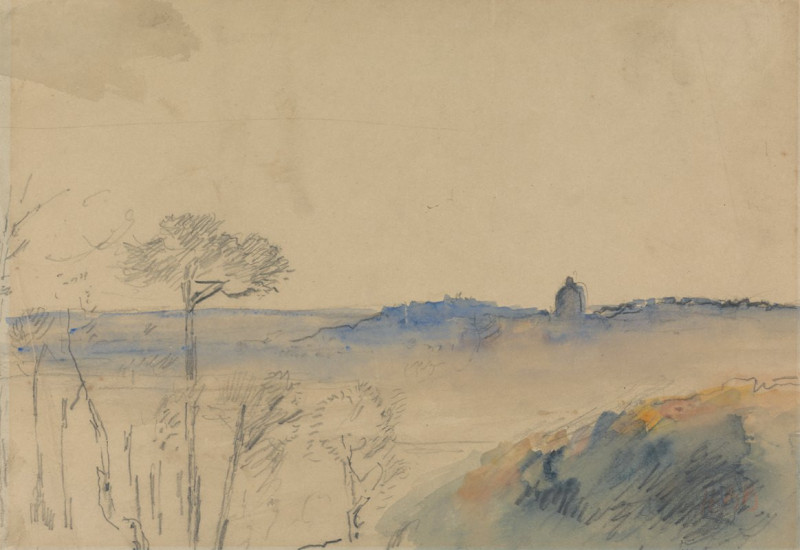Woman Washing Her Feet in a Brook (1894)
Technique: Giclée quality print
Recommended by our customers
More about this artwork
Woman Washing Her Feet in a Brook is a charming yet introspective oil-on-canvas painting by Camille Pissarro, created in 1894. Nestled amidst a vibrant setting of lush greenery and a serene watercourse, this artwork provides a glimpse into a tranquil yet personal moment. The central figure, a woman, is depicted in the act of washing her feet in a brook, paired with a composition that harmoniously blends human presence with the natural world.The woman is seen bending over her bared feet, her hands delicately interacting with the water—a symbol of purity and renewal. She dons a deep purple blouse and a black skirt, which she thoughtfully holds up away from the water, revealing a white petticoat. To her side rests what appears to be her shoes and a small blue bundle, possibly her belongings or additional clothing.Pissarro's brushwork is vibrant and textural, capturing the shimmering reflections of light on the water and the varied textures of the lush foliage around the brook. The painting is imbued with a sense of peace and a gentle intimacy, characteristic of Pissarro’s tender approach to his subjects. This piece not only highlights the artist’s mastery in portraying the simple moments of everyday life but also his profound connection to natural scenes that evoke a sense of calm and beauty.
Delivery
Returns
Blessed are they who see beautiful things in humble places where other people see nothing. — Camille Pissarro
Camille Pissarro (1830-1903) was born on St.Thomas (now the US Virgin Islands) to a Portuguese father and a Dominican mother. He went to Paris to study art at Ecole des Beaux-Arts. He was an early pioneer of pointillism and neo-impressionism and later became a mentor of many famous impressionist painters including Cezanne, Manet, Renoir, and Gauguin. His paintings depicted rural and urban French landscapes and lifestyle. Many of his works politically captured images of peasants and laborers. Today, he is considered the father of impressionism.

